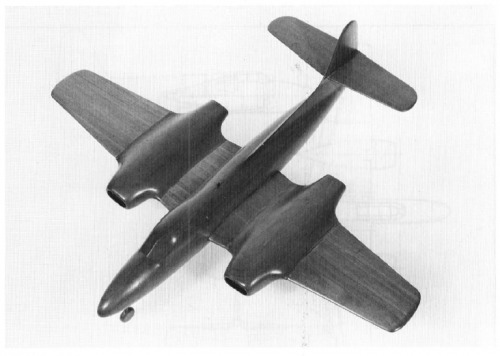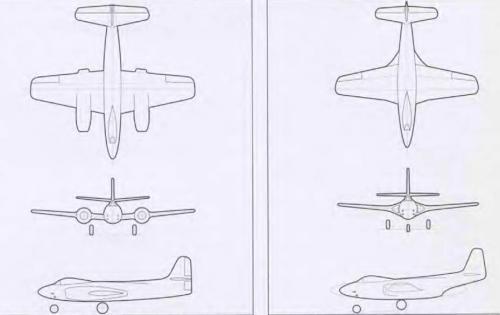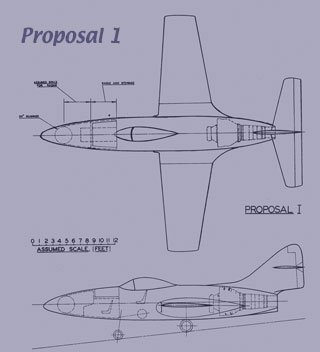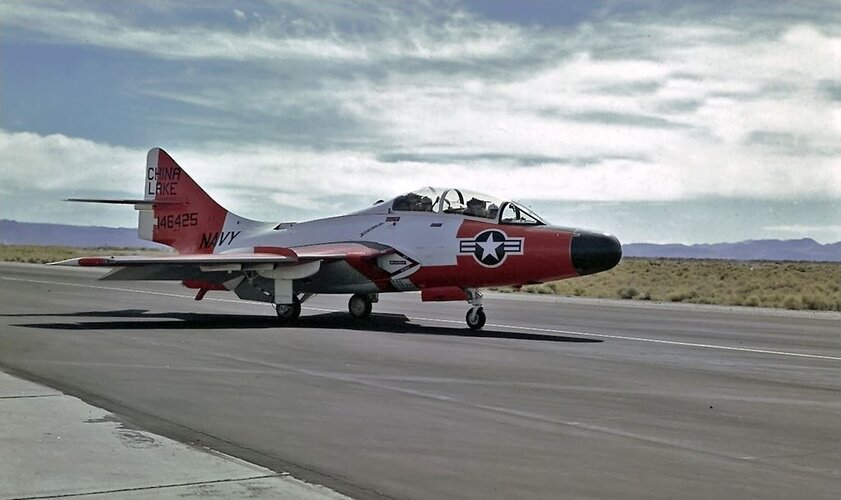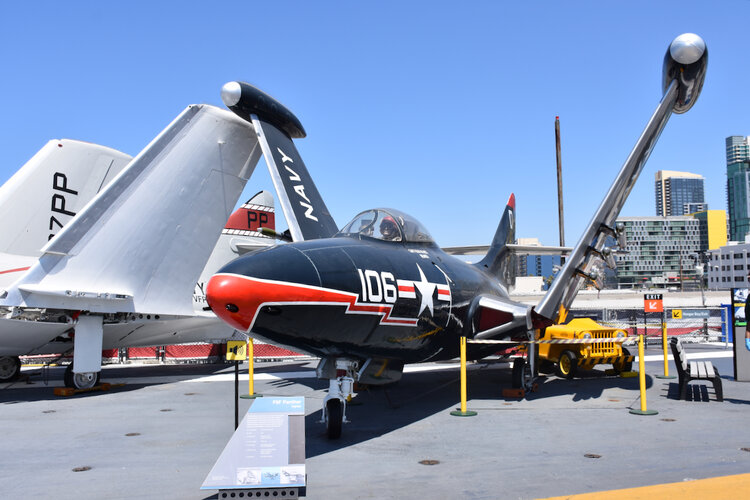Serious Grumman work on jet-powered fighter aircraft did not really get underway until after the war was over. The G-75 was a postwar project begun by Grumman in September of 1945 in response to a Navy Request For Proposals for a two-seat radar-equipped jet-powered carrier-based night fighter. The G-75 was to be capable of flying at speeds of 500 mph and at altitudes of 40,000 feet and was supposed to be able to detect the presence of enemy aircraft at ranges as great as 125 miles. The G-75 looked very much like a jet-powered F7F Tigercat, and was to be powered by four 3000 lb.s.t. Westinghouse 24C-4B turbojets mounted two each side-by-side in midwing-mounted nacelles. A radome was to be mounted in the nose, and the armament was to have been four 20-mm cannon.
Competing proposals from Curtiss, Douglas, and Fleetwings were also submitted to the Navy in response to the RFP. On April 3, 1946, the Navy deemed the Douglas proposal as being the best of the lot, and ordered three prototypes under the designation XF3D-1. However, on April 11, a Navy contract was issued for the construction of two G-75 prototypes under the designation XF9F-1 as a backup just in case the Douglas design did not live up to expectations.
The XF9F-1 was appreciably larger and heavier than the XF3D-1. In the summer of 1946, further design studies indicated that the Grumman design was considerably less promising than the Douglas design, and the Navy considered cancelling the XF9F-1 contract altogether. ,p. This would ordinarily have been the end of the line, but Grumman had fortuitously been working on another totally-unrelated project under the company designation of G-79 that had been initiated only a month before the two XF9F-1 night fighter prototypes had been ordered. As originally conceived, the G-79 was a much smaller single-seat fighter powered either by a single centrifugal-flow turbojet fed by wing root intakes and exhausting underneath the rear fuselage, by two wing-mounted Westinghouse J34 axial-flow turbojets, or by two Rolls-Royce Derwent centrifugal-flow turbojets mounted in the wing roots. Alternatively, during the early summer of 1946, Grumman proposed the use of a single 5000 lb.s.t. Rolls-Royce Nene centrifugal-flow turbojet which would be built under license in the USA as the J42. In case the J42 ran into unexpected difficulties, the 4600 lb.s.t. Allison J33 was considered as a possible alternative, since it was about the same size as the Nene but was somewhat less powerful.
Enough interest was generated in this list of projects that the Navy was persuaded to amend the XF9F-1 contract rather than cancel it outright. On October 9, 1946, the XF9F-1 contract was amended to provide for the construction of three single-seat prototypes (BuNos 122475/122477), a static test airframe, plus design data for a swept-wing version. By November, the Navy had narrowed its choice of powerplant options and specified that two of the G-79 prototypes should be completed as XF9F-2 powered by Rolls Royce Nene turbojets and that the third should be powered by an Allison J33 turbojet and be designated XF9F-3.


